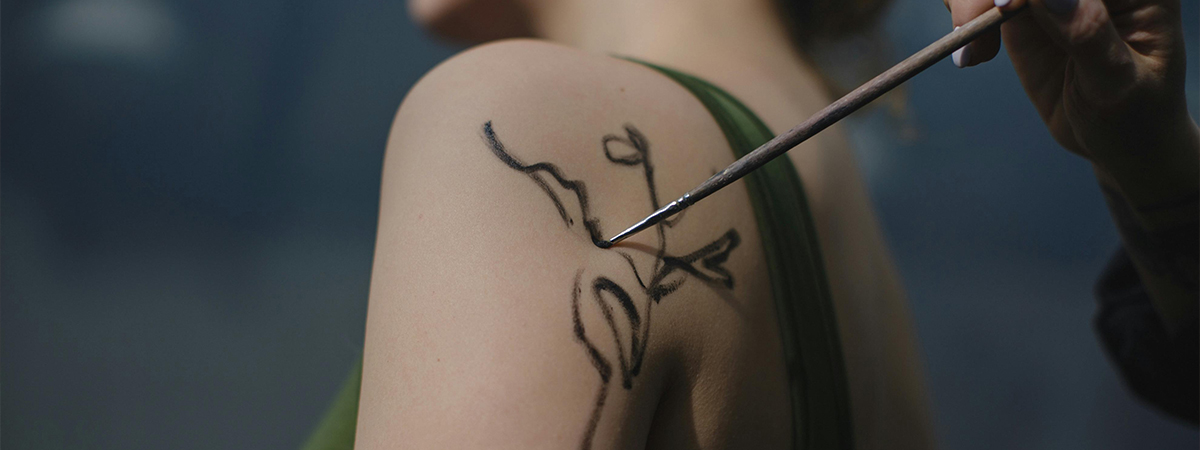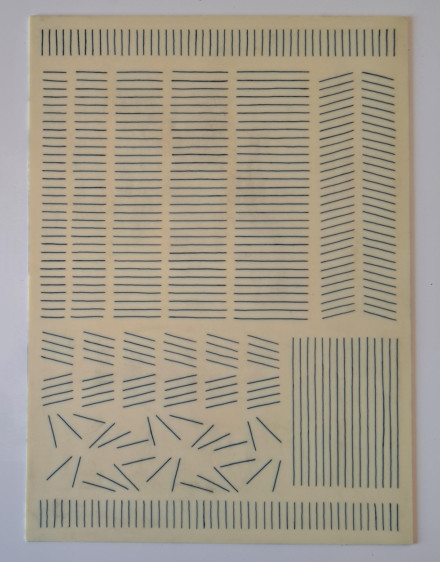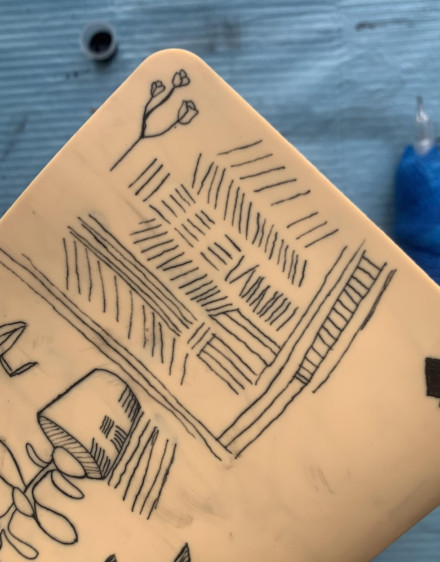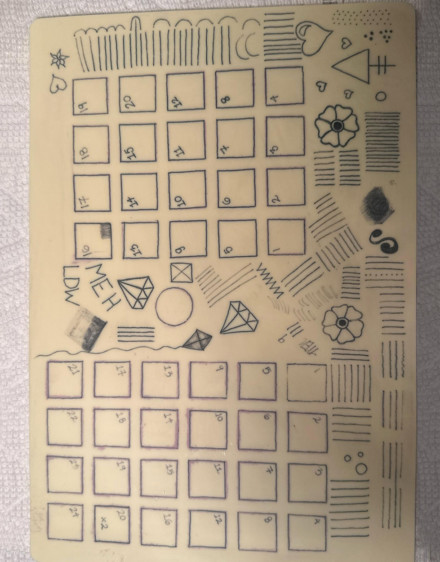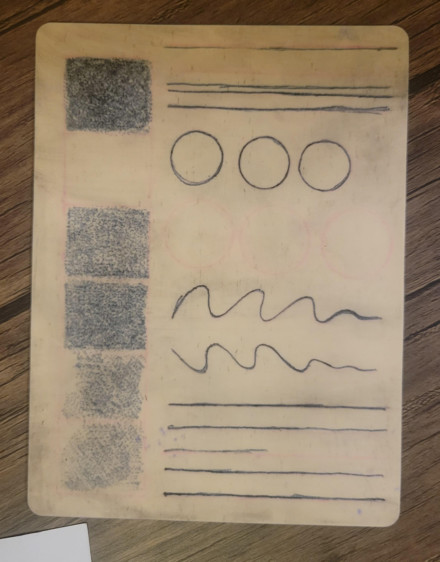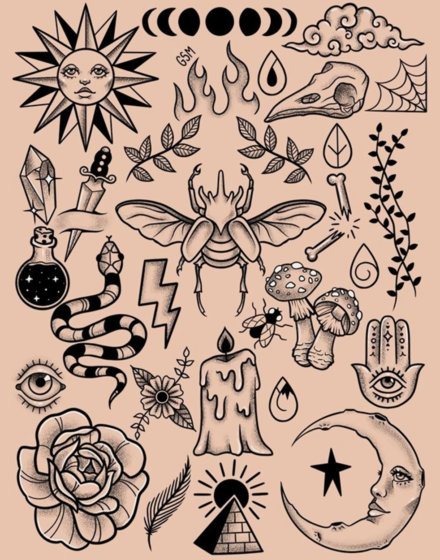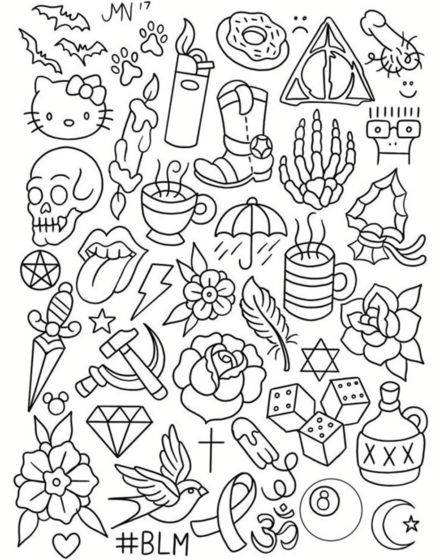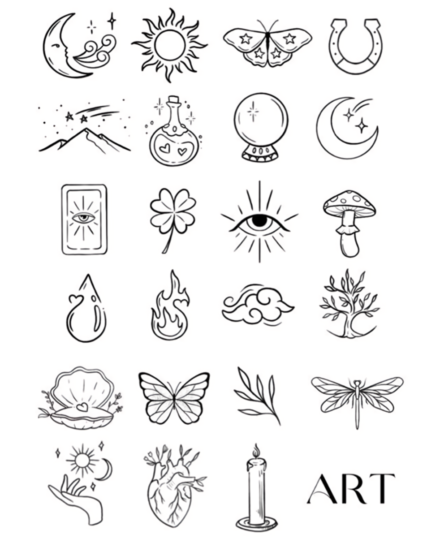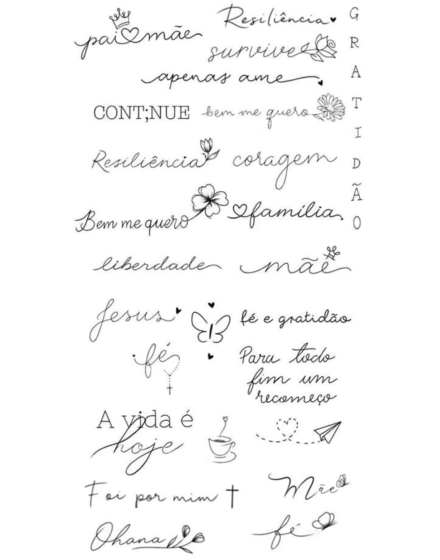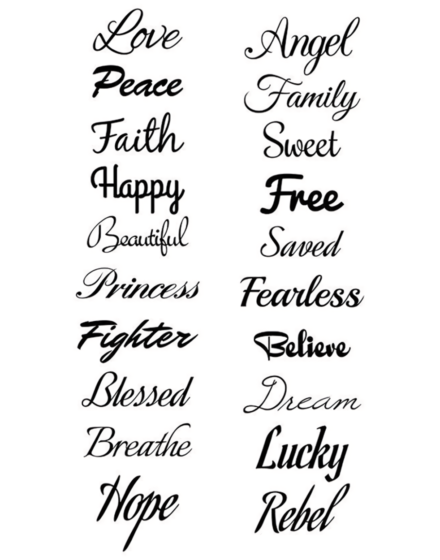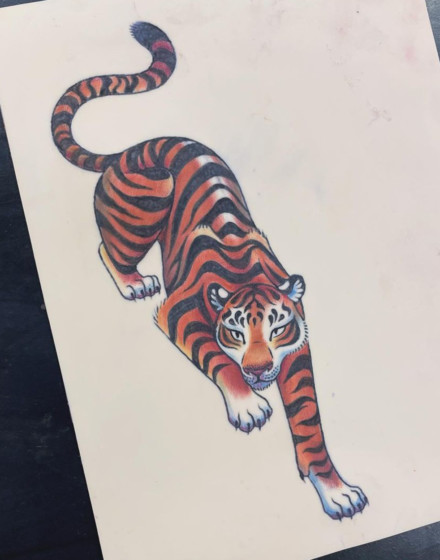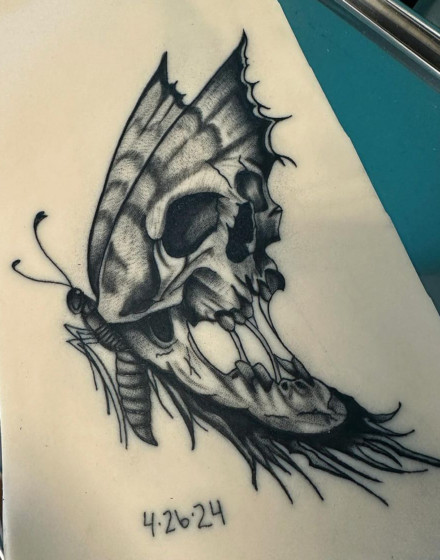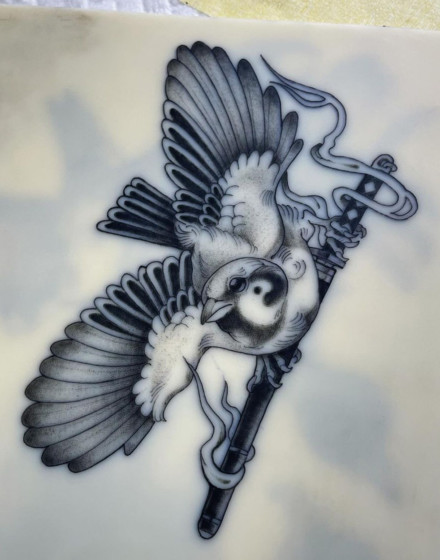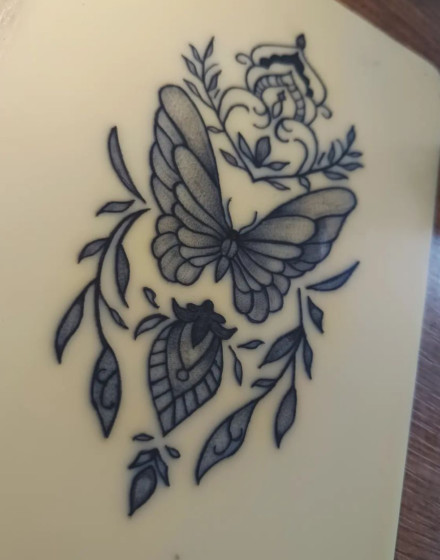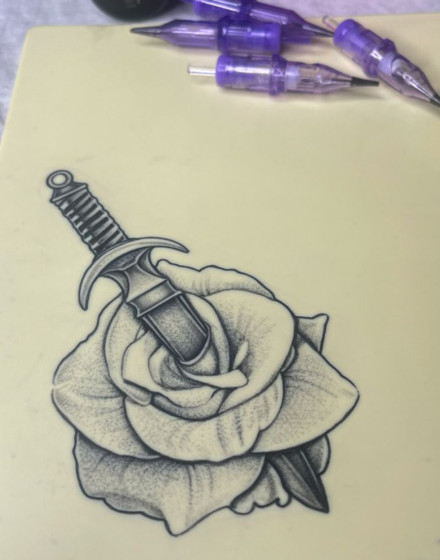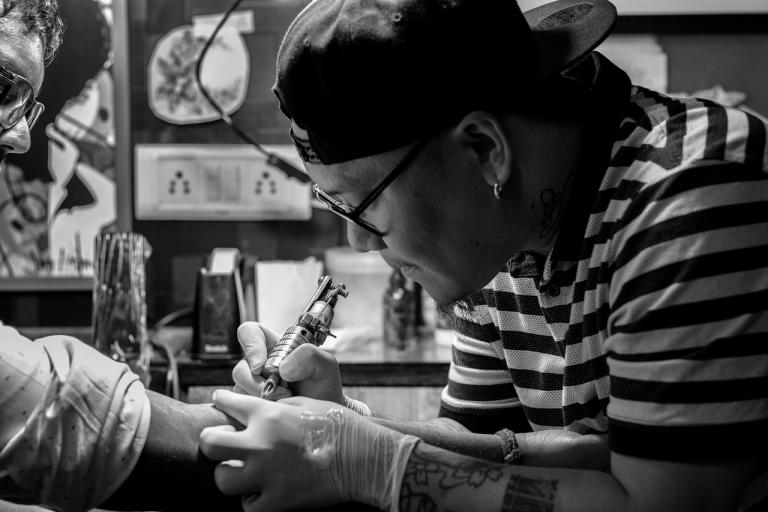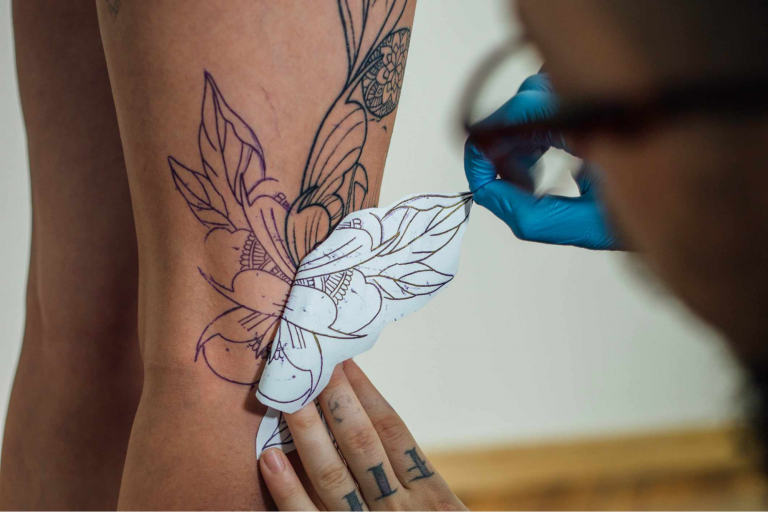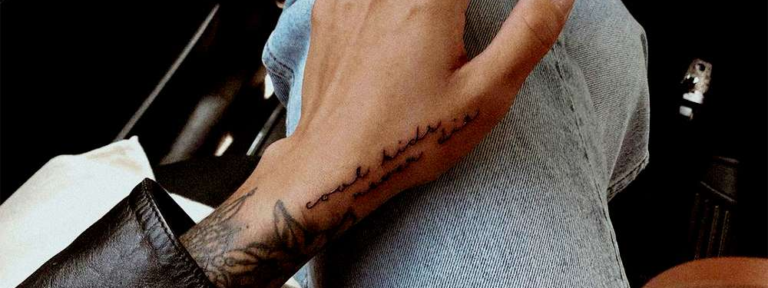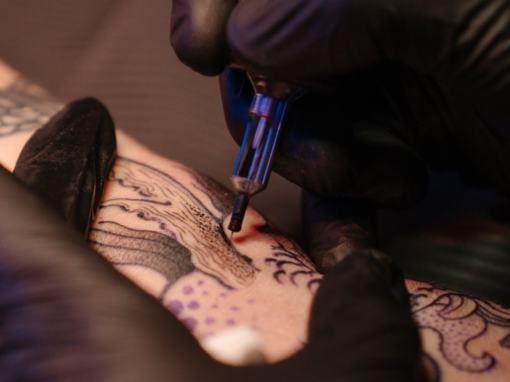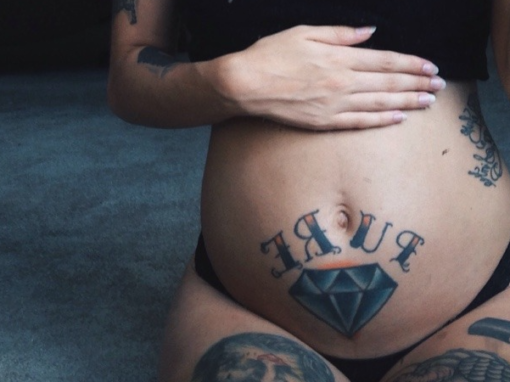So you’ve decided to become a tattoo artist, and now you’re wondering how to practice tattoo designs. Should you head first into buying materials? Well, you can, but hold on just a moment. And even if you do have the equipment, you may have a daunting fear of ruining your first fake skin. How to overcome it?
In this article, you will see firsthand how to apply the “skill tree” technique to learning tattooing. We’ll break down the best way to practice tattooing, starting with the essential skills you need to build. And from there, we’ll gradually branch out into exploring different styles, techniques, and approaches.
Essential Tools and Techniques for Beginner Tattooists
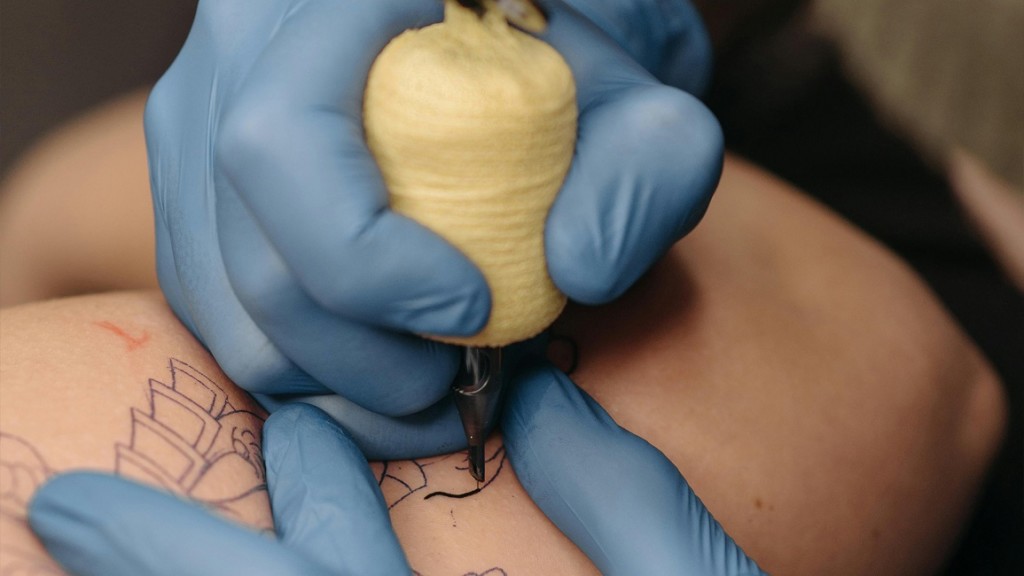
Before we move on to the main topic, let’s talk about the basic tool kits for work.
If you’re scared to use fake skin right away or don’t have it yet, you can practice with pencils and a sketchbook as an alternative to tattoo practice sheets. For uneven surfaces, fruits such as oranges or bananas are perfect for beginner practice tattoo designs. However, it is hardly safe to eat them then…
Even if you prefer to draw digitally, we still recommend trying the traditional approach, as it will more naturally resemble the real tattooing process. Pencils can be used to simulate sketching and color filament, and markers are great as an alternative for linework. If you can, buy or remove a tattoo grip cover from your machine and put it on a liner pen to get as close as possible to a real tool. This will also help with preventing wrist fatigue.
Speaking of the wrist, don’t draw with it! The key to steady lines lies in using your elbow and shoulder to guide the movement, rather than just your wrist. You can try tying a ruler along the length of your forehand to limit your wrist.
Lastly, structure your learning into a “skill tree.” This method is borrowed from video games and is designed to focus on building foundational skills before moving on to more complex techniques. For example, start with basic line work, then progress to shading, and finally, practice color application. Then, challenge all your skills with a test stencil before advancing further up the tree.
The Fundamentals of Tattooing
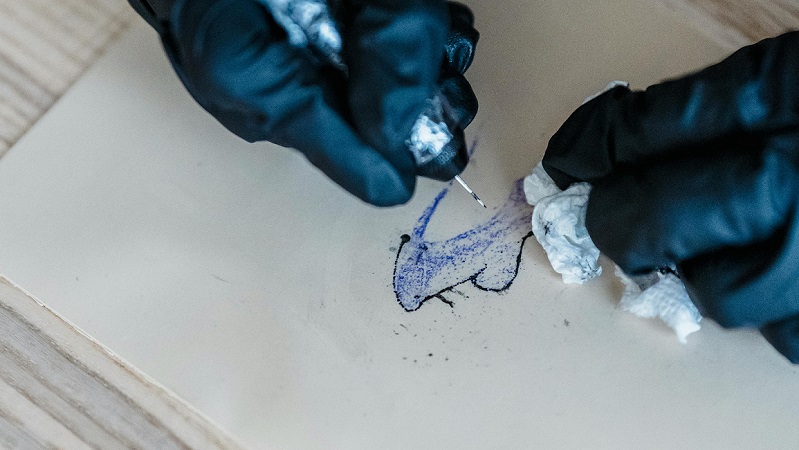
The journey to becoming a skilled tattoo artist requires a solid understanding of the fundamentals. In this part, you will see where tattoo artists really start their training. And no, it doesn’t start with Pinterest boards, although we’ll get to them soon enough.
Level 1: Mastering the Basics
Alright, so you got your fake skin or a piece of paper in front of you, and the tool is ready to draw the first line… Yet, no thoughts, head empty.
Now what?
From here, we have two possible scenarios: either you have no idea where to start, or you have a bunch of saved ideas from Pinterest and are just sitting there wondering which one to pick first. In either case, there is only one solution: draw lines. Yup, you read that right. Set aside your stunning collection for another time and fill your first page with lines.
Below, you can see an example of the tattoo linework practice made by the InkMatch team. The blank space is left for testing out ink, or for doodles.
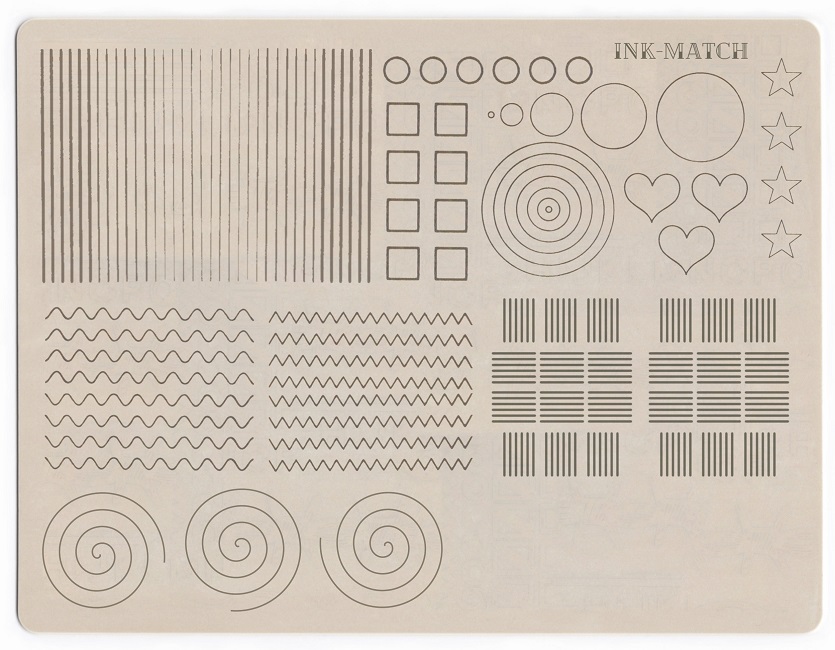
InkMatch practices fake skin
We’re talking about really easy tattoo drawing ideas: vertical lines, horizontal lines, waves, spiky waves, spirals, you name it. Making tattoos is similar to traditional and digital drawing, and, unless you have an artist background, you might get really frustrated by jumping straight into flashes. Even for those who are artists, we still advise dedicating at least one sheet to those lines.
Clear and strong lines are the foundation of a good tattoo. That way, you get to know the instrument, practice the grip and hand positions, get used to the even depth, and so on. For example, vertical lines follow a similar principle but can be trickier than horizontal lines because gravity makes your hand waver. Practice these lines with the same approach: keep them straight and consistent.
Examples of fake skin beginner studies from Reddit
It might feel repetitive and boring at first, but remember, no skill has ever appeared out of thin air. The goal here is to get confident and overcome the blank canvas syndrome. As you get the hang of the tattoo line practice, you can practice some geometric shapes, hearts, stars, arrows, and similar easy shapes.
Once you get the hang of simple shapes, you can move on to learning different techniques for color filament and shadow. They can also be imitated with pencils and a pen. To put it in a nutshell, practice filling in areas with smooth, spiraling motions, and hatching by using the pen from another angle.
Level 2: Flash Tattoos
After you master lines that would make a ruler jealous, it’s time to get to simple flash tattoos. In a nutshell, a flash is a predesigned sheet with designs of any kind. These simple-to-draw tattoos can help you develop your skills, build your portfolio, and boost your confidence before creating custom tattoos.
Examples of flash sheets
One great way to start practicing with flashes is by exploring Pinterest. Search for “tattoo flash designs” and save a few designs that catch your eye. Then print a stencil, and get to work. Flashes are also a great phase to start practicing filling and shading.
Another fantastic resource for tattoo stencil practice is the work of your favorite tattoo artists. Many artists sell or post their flash sheets on social media. If these designs remain on the fake skin as a study, feel free to steal like an artist or support them by purchasing their tattoo practice sheets.
Level 3: Lettering
Names, words, phrases, and quotes are common requests from clients. As you delve deeper into practicing tattoo designs, you’ll find that lettering deserves its own special focus. Lettering might seem straightforward — simple as ABC, right? Well, yes and no.
Examples of lettering practices in different styles
Lettering is more than just writing, it combines elements of drawing and calligraphy. Unlike geometric shapes or illustrations, letter practice tattoo designs require a different kind of precision.
Each symbol must be proportionate and aligned with the others, which can be tricky when working on curved surfaces. You have to keep in mind that the letters should be of a consistent size and spacing, they shouldn’t be too close or too far apart, and they should have the same slope in most cases.
There are many different fonts that you can master, and in that case, you can make stencils of an alphabet. Start with simple, block letters to get a feel for spacing and alignment. Once you’re comfortable, move on to more complex styles like cursive, gothic, or even custom fonts that you create yourself. There’s no need to memorize hard fonts, simply copy and paste letters into your photo editor to make the design.
Advanced Tattoo Practicing
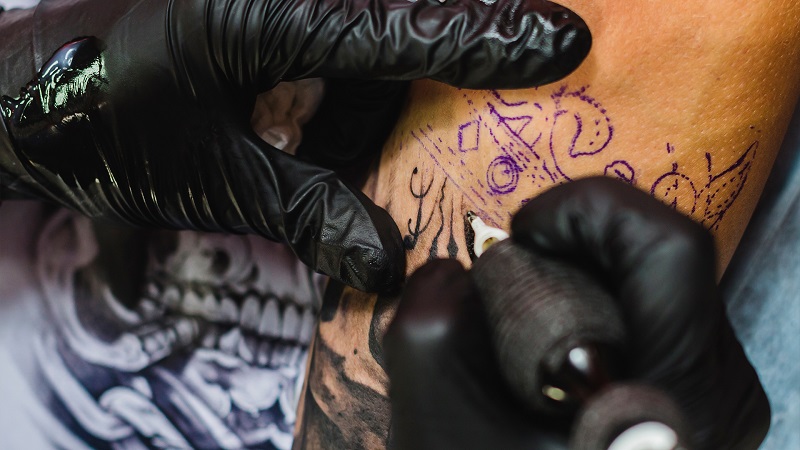
After redrawing a bunch of albums and filling your closet with a a stack of fake skins, you’ve finally got your base covered. It’s a great time to apply for an internship at a tattoo studio or to pull out your own designs from the long drawer.
This part is dedicated to furthering your progress as a tattoo artist, thanks to which you will be able to fill your portfolio with quality or find a new source of ideas.
Level 4: Trying Out Styles
Once you’ve built a solid foundation, it’s time to broaden your horizons and explore different tattoo styles. Practicing a variety of tattoo styles is essential for your growth as an artist. This way, you can either expand your portfolio or decide on the styles you like or vice versa.
Many tattooists choose to follow only one path, as you may read in our interview with three tattoo artists specializing exclusively in anime tattoos.
Fake skin studies in different styles
Starting with the classics, old-school style is a great beginning point for practicing tattoo designs. Traditional tattoos rely heavily on clean lines and basic shapes, perfect for applying the skills you’ve already mastered. Moving to intermediate, you can practice neo-traditional, tribal, or geometric tattoos.
It may sound surprising, but minimalism is not as easy as it seems, because it requires a steady hand. With minimalism, you won’t be able to cover the mistake compared to the wide lines that traditional tattoos allow.
As you gain more confidence and skill, you can begin experimenting with more advanced styles like realism, Japanese, and ornamental tattoos. Those styles are challenging because they leave little room for error. And if you’re seeking the final boss — the watercolor style will patiently wait for you.
Level 5: Creativity

For an aspiring tattoo artist, mastering creativity is just as important as practicing technical skills. Of course, you can always rely on flash sheets or make ready-made designs in a studio, but if you want to continue developing professionally or even open your own tattoo shop, this will not be enough.
As controversial as it may sound, boundaries boost creativity. You might’ve heard of or even experienced a blank canvas syndrome, a paralyzing feeling that doesn’t let you start anything. One of the reasons why it happens is because of the overload of free space. However, you can overcome this fear with a random word generator.
To get started, visit any website that generates random words, preferably those that let you pick only nouns. Now here comes the fun part: generate three random nouns and use them as prompts for your tattoo sketch.
Don’t worry about making it perfect — the goal here is to let these words guide your creativity, pushing you to think in new and unexpected ways. And if it seems to you that you can’t come up with anything with the chosen words, it’s just a matter of a skill issue, don’t let it stop you!
Over time, you will be able to move on to adjectives that will only hint at the mood of the sketch, leaving the content for practice tattoo designs to your preference. Who knows, someone may want to get your randomly generated design idea actually tattooed.
Summary
This concludes our discussion on the best ways for beginners to practice tattoo designs. We hope that this article has helped you to get through the fog of fear and uncertainty about how to start your career as a tattoo artist.
We’re looking forward to seeing you grow as a professional and featuring your profile on our website in the future. Or even speak with you in an interview! As the famous writer Brandon Sanderson wrote in his novel: “Journey before destination.”
Good luck on your journey!
FAQ
✒️ What Do Beginner Tattoo Artists Use for Tattooing?
Beginner tattoo artists typically start with the basics: a tattoo machine, needles, ink, and practice materials like fake skin or pigskin. But if you don’t have any of these yet, you can alternatively try to simulate the experience with pencils, pens, a sketchbook, and fruit. What we do recommend is to get a tattoo grip cushion or a tiny ball for better comfort.
? Can Tattooing Be Self-Taught?
Of course, but in this case, you’ll have to look for a basis to practice tattoo designs on your own and develop the discipline to hone your skills. The InkMatch team has gathered the basics in one place to help you out.
? Is It Hard To Learn Tattooing?
It can be challenging, but with dedication and practice, it’s absolutely achievable. Like any skill, tattooing requires time, effort, and a willingness to push through obstacles. The art of tattooing is very similar to drawing, so you can pick up interesting knowledge from traditional and digital artists.
? How Can I Practice Designing Tattoos?
Look for inspiration in your surroundings, for example, with the help of a tattoo gallery, where you can choose a design according to many parameters. We also recommend trying a word generator challenge.
?️ What Is a Good Tattoo for Beginners?
A line. No, seriously, a line is the best way to get to know the instrument. With the help of different lines, you can learn how to hold your hand correctly during a tattoo, feel the strength and depth of the tattoo, and learn to draw with confidence.
